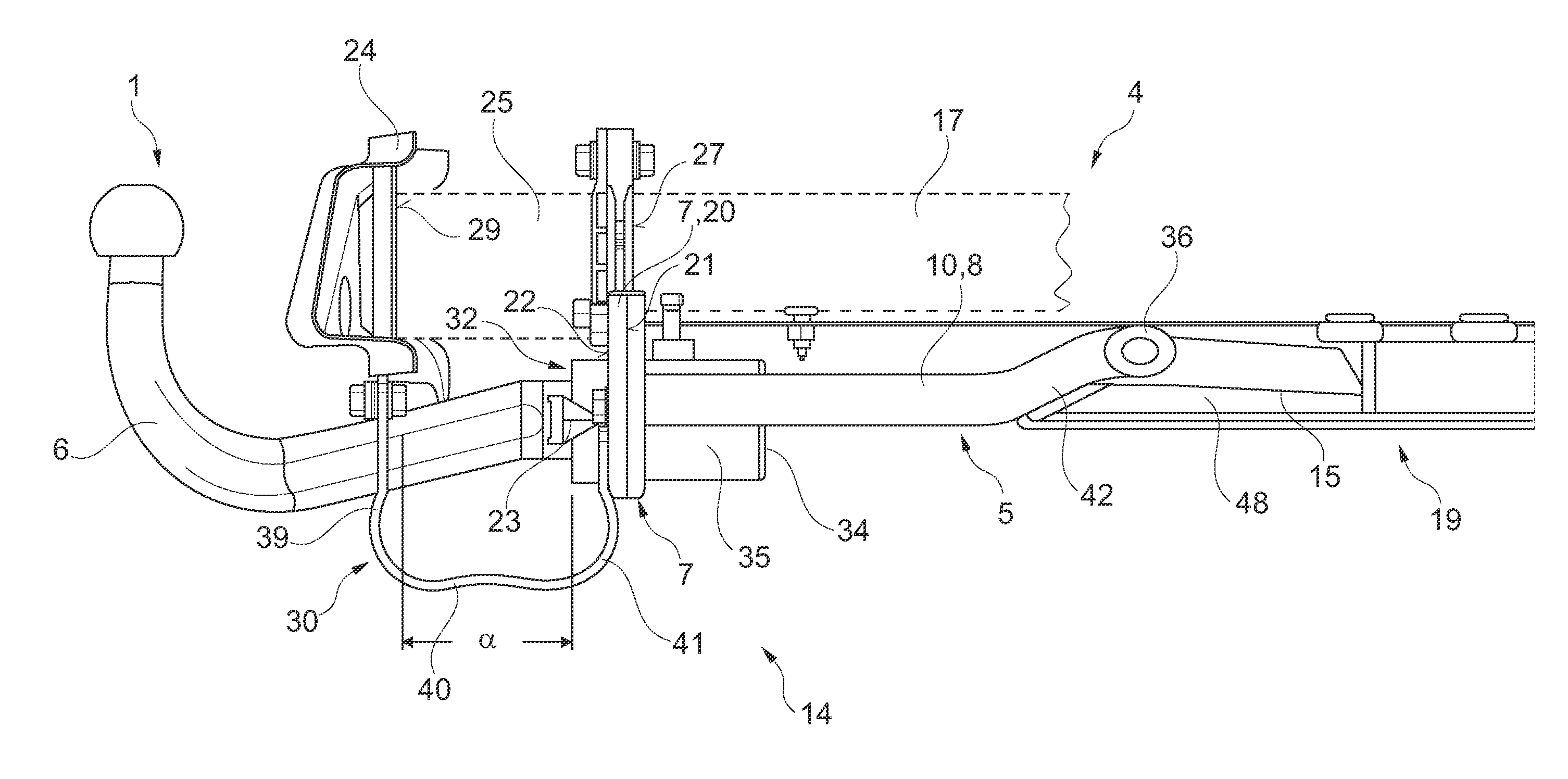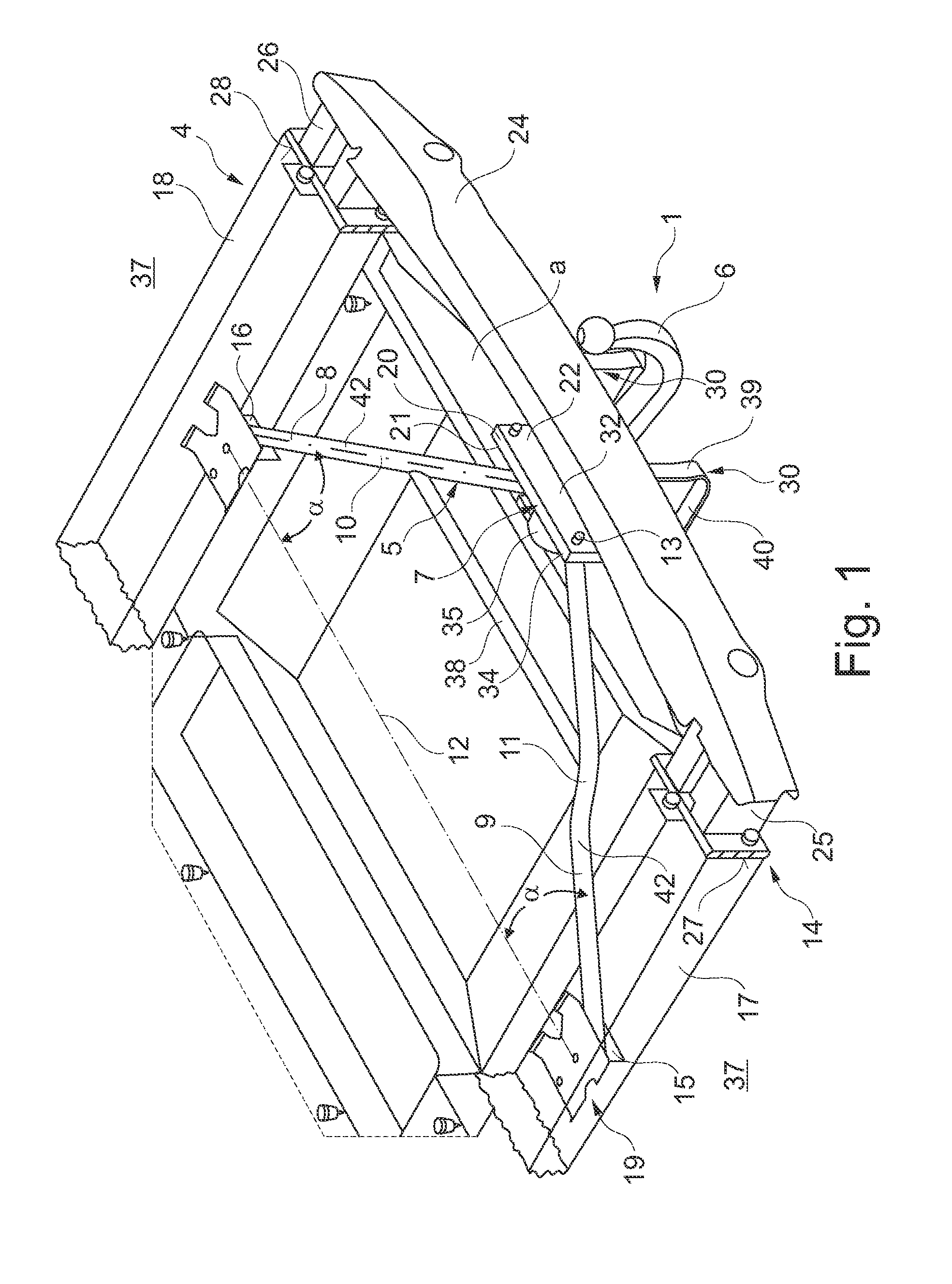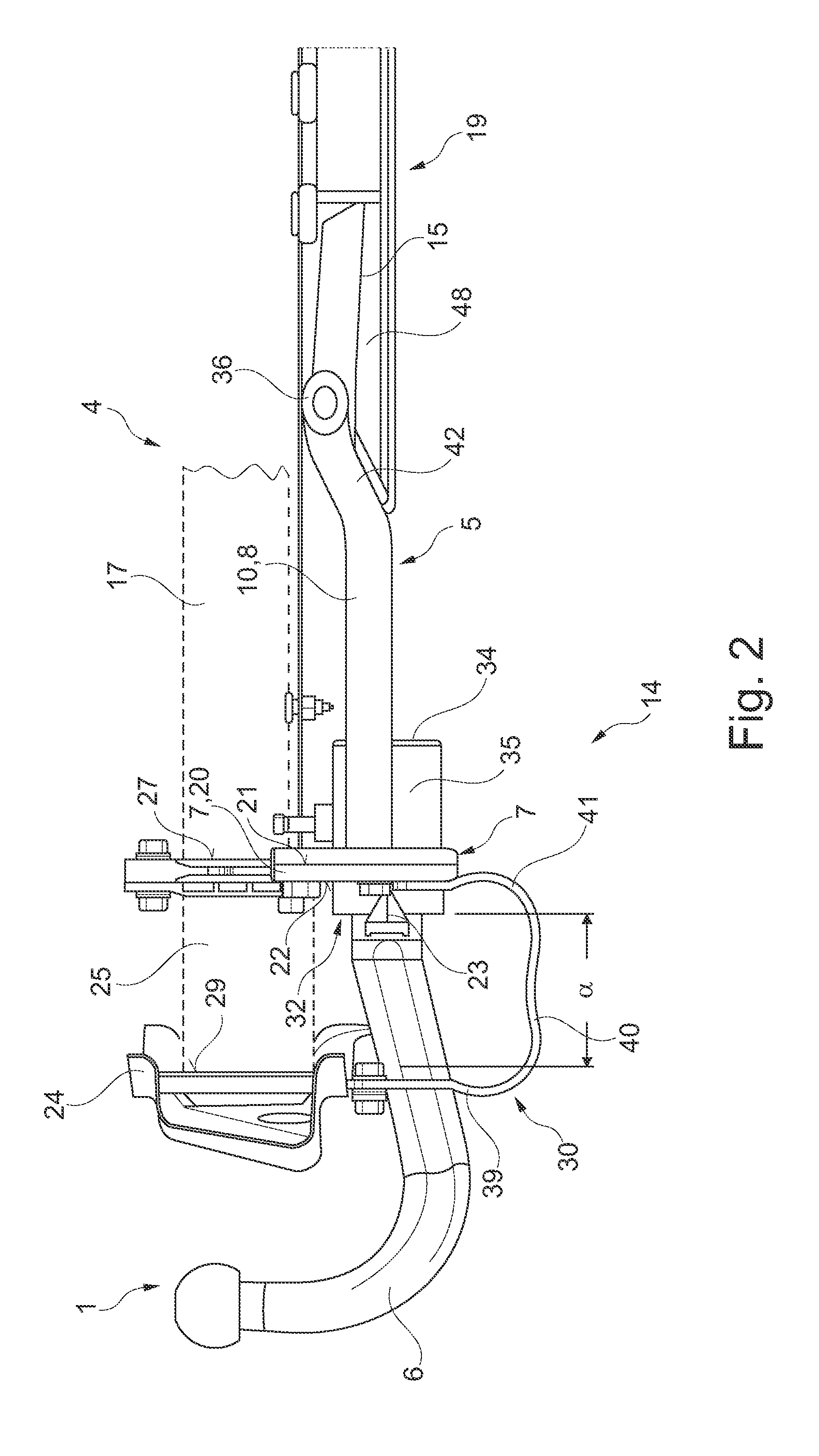Trailer towing device of a passenger car
a technology for passenger cars and towing devices, which is applied in the direction of towing devices, vehicle components, transportation and packaging, etc., can solve the problems of considerable body damage, high cost, and high weight of cross members, so as to improve the transverse stability of the transmission linkage, save weight, and save weight
- Summary
- Abstract
- Description
- Claims
- Application Information
AI Technical Summary
Benefits of technology
Problems solved by technology
Method used
Image
Examples
first embodiment
FIG. 1 shows a schematic perspective view of a tail of a passenger car 4 with a trailer towing device 1 according to a The trailer towing device 1 comprises a removable trailer coupling 6. This removable trailer coupling 6 is inserted in a latching opening 32 of a rear 22 of a central nodal element 7. This central nodal element 7 is arranged at a distance a from a rear bumper 24, which together with two crash boxes 25 and 26 forms a crumbling zone. This crumbling zone is to dampen an impact energy on the tail of the passenger car before the lateral side members 17 and 18, to whose ends 27 and 28 the crash boxes 25 and 26 are screwed, and the body of the vehicle are damaged. The distance a between the rear bumper 24 and the central nodal element 7 is so dimensioned that the crumbling zone length of the crash boxes 25 and 26 can be unimpededly utilized for the removal of the impact energy. Only after the compression of the crumbling zone length of the crash boxes 25 and 26 will the b...
second embodiment
FIG. 3 shows a schematic top view of a tail of a passenger car 4 with a trailer towing device 2 according to a This top view clearly shows the rear axle region 37 with the two rear wheelhouses 44 and 45 and the side members 17 and 18 as well as a further cross member 38 which connects the side members 17 and 18 in the front tail 19 and forms the cross member 38 for a Watt linkage. On the connecting points of the cross member 38 with the side members 17 and 18 the ends of the force transmission elements 8 and 9 of the traction force transmission linkage 5 which are not visible here are simultaneously fixed with the screw connections provided for the cross member 38.
The trailer load resting on the trailer coupling 6 in this embodiment is largely accepted by a connection with a cross member 46 comprising a luggage compartment lock 50, so that the spring-elastic connecting elements 30 known from FIG. 1 are merely provided optionally between the back side 29 of the rear bumper 24 and th...
third embodiment
FIG. 5 shows a schematic perspective bottom view of a tail of a passenger car 4 with trailer towing device 3 of the application. To this end, the traction force transmission linkage 5 is integrated with its two force transmission elements 8 and 9 as well as the transverse tube 36 in a floor plate 33 of the luggage compartment region, so that with this construction, too, the absorbing of the central nodal element s7 with the help of spring-elastic connecting elements to the rear bumper 24 is no longer required, since this is taken over by the rear front 47 of the floor structure 48 of the luggage compartment 49.
FIG. 6 shows a schematic partially longitudinally cut view of the trailer towing device 3 according to FIG. 5. The elements not located in the longitudinal section plane, such as the crash box 25, the side member 17 with its end 27, onto which the crash box 25 is flanged, are drawn with interrupted line. In the floor structure 48 both the transverse tube 36 as well as the forc...
PUM
 Login to View More
Login to View More Abstract
Description
Claims
Application Information
 Login to View More
Login to View More - R&D
- Intellectual Property
- Life Sciences
- Materials
- Tech Scout
- Unparalleled Data Quality
- Higher Quality Content
- 60% Fewer Hallucinations
Browse by: Latest US Patents, China's latest patents, Technical Efficacy Thesaurus, Application Domain, Technology Topic, Popular Technical Reports.
© 2025 PatSnap. All rights reserved.Legal|Privacy policy|Modern Slavery Act Transparency Statement|Sitemap|About US| Contact US: help@patsnap.com



